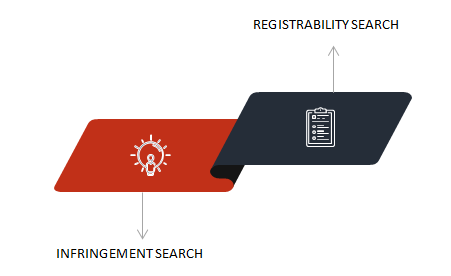Trademark Search: A Prudent Step Towards Mitigating Future Risks
Businesses have realized the immense significance of registering trademarks in preserving brand value and identity. This is evident from the rising number of trademark filings. However, not all trademark applications get approval from the IP office, resulting in the squandering of time, money, and other crucial resources for companies. One of the things that businesses can do to improve their chances of approval is to conduct a trademark search before filing a registration form. It is a process to rule out the possibility of similar and identical marks already in existence.
This article will broadly discuss the need for trademark search, its objectives, critical elements in conducting a trademark search, its scope, benefits, various tools used in trademark search, etc. But first, let us understand what trademark search is.
Table of Contents
Trademark Search and its Relevance
A trademark search helps businesses find identical or similar marks in existence before filing for trademark registration. A comprehensive search encompasses not merely registered trademarks but also trade names, businesses’ names, trade literature, company indexes, businesses and newspaper indexes, etc., that could hinder the trademark registration process. It covers both online and offline use of marks that are similar to the mark one wishes to register and use. Moreover, trademark search is not limited to just brand names (words or phrases). The Vienna code classification helps businesses generate information on identical or similar brand logos already in existence.
It is vital to perform a trademark search to register a brand name or logo for its products and services. If a similar trademark exists in the trademark registry, the name must be altered, or a new name must be selected. Alternatively, if the brand name is unique, one can proceed and file for trademark registration at the concerned intellectual property (IP) office. Therefore, it is always a good idea to conduct a trademark search before applying to register the trademark.
Businesses can avail several benefits by using the trademark search and its subsequent search reports. In the next section, we will discuss the same.
Benefits of Trademark Search
The five crucial benefits of trademark search are shown in Figure 1 below:

- Saves Money and Resources: The foremost benefit of performing a trademark search is that it helps save money and other resources against a mark that may not be available for use. Proceeding with the trademark registration in the absence of any search mechanism can prove counterproductive with the loss of valuable financial and other resources in the form of rejected trademark applications, office actions, and more.
- Saves Time & Provides Flexibility: A comprehensive trademark search recognizes the identical or similar mark already in existence, thereby minimizing the chances of office actions or objections by third parties that could easily result in delayed approval, or even rejection.
- Avoid Business Hiccups: A company may choose to move forward with mark usage and application filing without any trademark searching mechanism. In addition, it may also commence its marketing and branding activities with the mark just after submitting a trademark registration form. However, this can have dire consequences. All the efforts may be washed away when the mark is found to be infringing on a registered trademark. Consequently, a business is compelled to rebrand, creating a significant bottleneck in the process. A business can avoid all such predicaments by conducting an effective trademark search before applying for registration or commencing any operations involving the trademark.
- Avoid Dispute & Litigation Cost: Using an existing third-party trademark is most likely to cause a legal dispute and increase the litigation cost if the trademark owner is willing to enforce its right. Conducting an effective trademark search to check for the availability of the mark saves one from complicated and mind-boggling disputes and litigation costs.
- Get Valuable Insights: In the course of performing a trademark search, one can also develop insights about the trademarks that competitors are using in the same industry or domain. Such insights also help change your selection as per the market trends, tastes, and preferences.
Now that we have covered the benefits of trademark search, let us discuss its different objectives in the next section.
Different Objectives for Trademark Search
Trademark search is a quick and reliable way to check the availability of your finalized brand name or logo in the business domain. Most of the IP industry stalwarts advise conducting trademark search before using a new brand name, logo, slogan, etc. If a company fails to perform the search to check for its availability, it risks rejection of the trademark application. Moreover, in case the brand’s products are already in the market, and a similar or identical mark exists, the original trademark’s owner can take legal action and force you to stop the mark’s commercial use. Therefore, it is significant to know your objectives before performing a trademark search. There are primarily two objectives, as shown in Figure 2 below:

- Infringement Search: Applicants search official trademark registers for both approved and pending registrations to avoid the possibility of infringing upon anyone else’s rights. In addition, they also perform market-based common law searches for competitors using related, although unregistered trademarks.
- Registrability Search: To determine whether a trademark is available for registration, one must search for confusingly similar or significantly identical trademarks. Therefore, one must make similar inquiries required for an infringement search. In addition, one also needs to identify if your trademark contains:
- Surname
- Geographical name
- Inappropriate/illegal meaning or connotations
- Deceptive or confusing elements
- Known meaning related to kind, quality, quantity, value, or intended purpose of the goods or services
Once the objective is clear, the next obvious step is to get familiar with what a correct trademark search entails.
Essential Elements of a Robust Trademark Search
There are seven critical elements in performing an effective trademark search. These are listed below:
- Describing the products and services being sold with the mark: The first step towards effective trademark search is elaborating on the product or services to be sold with the mark. It helps in filtering out the results quickly and precisely.
- Identifying specific terms for your product and service using the online ‘Acceptable Identification of Goods & Services’ Manual: The next step is to figure out the acceptable terms for the goods and services. If you are conducting trademark search in the US jurisdiction, you can find the goods & services identification manual on the United States Patent and Trademark Office (USPTO) website. You can locate the terms that best describe your goods or services. For example, “flying discs” can be acceptable for a flying saucer-type toy.
- Finding international class: The entry for the applicant’s service or product in the Acceptable Identification of Goods and Service manual will also provide detail about the suitable international class for that product or service. Although providing the type of goods or services is not mandatory in an application, knowing it in advance helps narrow down the search.
- Determining related goods or services, and their respective classes: Recognize terms for related services and goods advertised, used, or sold in association with your product. For example, peanut butter is used with jellies and jams in the acceptable identification of goods & services manual. Users should also scan the international classification of goods and services for classes related to their products and services.
- Formulating a basic search strategy: Conduct a comprehensive brainstorming session to ponder other alternatives to your trademark in case the first choice happens to be taken and unavailable. If your marks include a phrase, think about what the most important keywords are. Besides, make sure that you use truncation devices (*) or wildcards (?) to search for marks with word stem similar to yours.
- Expanding your search strategy: Broaden your search by using different spellings and homonyms to your mark. Try using words that bear similar meaning to your marks. Moreover, try words with similar sounds or appearances or even phonetic equivalents. When required, the search strategy can also be narrowed by restricting your search results to the goods/services found in step two or the international class found in step three.
- Performing the search: Conduct the search on relevant trademark databases. Trademark search must take place on all relevant databases, platforms, tools, etc., to ensure no similar or identical mark exists.
Brand names are the most common types of trademarks. Thus, knowing how to search for a free trademark name is immensely important. In the following section, we will elaborate on the same.
Searching for a Name Trademark
Apart from identical marks, any similar name that might cause confusion in the minds of consumers is prohibited from registration or use. Thus, a comprehensive trademark search in different categories can help businesses in ensuring minimum chances of trademark infringement or any other legal issues in trademarks. Trademark search generally consists of the categories shown in Figure 3 below:

- Identical Trademark Search: The result of an identical trademark search detects the marks which are visually or phonetically an exact match.
- Similar Trademark Search: The outcome of this type of trademark search identifies confusingly or identically similar trademarks.
- Trademark Search with Opinion: Usually, this type of search comes with an experienced attorney’s advice or recommendations for similar or identical trademark search outcomes depending on the consideration of the identified prior mark.
- Index Search: This search recognizes businesses with similar or identical names to the search terms.
- In-use Verification Search: It verifies if the third party with prior rights is utilizing its trademark rights appropriately, which may create an opportunity for contesting the registration.
- Trade Name Search: This search identifies trade names that conflict with the selected trademark. It does so by filtering out companies with names identical or similar to the search terms. Apart from this, an expert IP attorney can also help in checking the mark for unintended associations as well as meanings. This search proves immensely fruitful if a company wishes to launch its product or services in new markets where linguistic differences could cause hindrances.
Now that we have a fair understanding of the various categories of trademark name search, let us discuss the scope of trademark search.
Trademark Search Scope
Its scope should be broad enough to cover national trademark registrations, state trademark registrations, and also common law trademark rights. Besides, the national and state searches should encompass pending applications, abandoned applications, and expired registrations. This is because many countries grant trademark rights only upon use, and registration is not mandatory for trademark rights to exist. Hence, although pending applications and abandoned registrations imply the non-existence of IP rights, the marks in the application may still be in use and very much relevant.
It is also imperative to find common law trademarks even where no application to register the marks has ever been filed. Many databases also include lists of product names, though they are not complete. Supplementary data sources, such as periodicals covering the area of trademark use, press releases, phone book databases, internet domain name registrations, and corporate information databases, should be examined. Trademark searches lacking comprehensive common law trademark searches are irrelevant when utilizing a new trademark.
The next section talks about how to comprehend and interpret the search report and its results.
Trademark Search Report
IP experts compile the results of trademark search in a comprehensive report, referred to as a trademark search report. It provides all the details about the existence of trademarks that are identical or similar to the selected mark. Therefore, this report is immensely beneficial for companies looking forward to registering their trademark and launching products or services. These reports are usually compiled by specialized law firms. One can also reach out to trademark attorneys to prepare a detailed trademark search report for a particular mark or class.
The trademark search report makes it easier for businesses (decision-makers) to analyze the probability of trademark registration from the perspective of absolute grounds for refusal and the relative grounds for refusal. It also stresses the chances of objection from third parties in subsequent proceedings.
Technology has changed the contours of trademark search. The next section will elaborate on how.
Impact of Technology on Trademark Searching Tools & Strategies
The advent of technology, especially the internet as a searching tool, has catapulted the quality of trademark searching. It has also led to the formulation of advanced trademark search strategies. The web as a strategic tool can have a significant impact on trademark searching in the following ways:
- It can act as a large access point to the global use of word marks
- Be a fast and dependable front end to online trademark search vendors
- Possible search tool for non-word trademarks
- A common marketplace for companies seeking trademark search experts
Additionally, ever since the advent of the internet, trademark search tools and platforms have also evolved greatly. Early search platforms allowed for searching of only simple word strings. Various challenges, such as intentional misspellings, slangs, puns, corrupted spellings, variations in common words, prefixes and suffixes, colloquialisms, foreign language equivalent, abbreviations, and punctuations, synonyms, coined words, render these initial tools useless.
Fortunately, modern search services help in collating similar marks. Over the years, producers and vendors have taken the diligent task of cross-referencing related string marks. Besides, technology, such as the rotated trademark index, helps to locate letter strings present as prefixes, suffixes, mid-word, or the whole word. Therefore, there is no denying that the advanced tools have had a massive impact on trademark search.
Let us now discuss some tools available for online trademark search.
Online Trademark Search Tools
One of the popular tools for trademark search is the USPTO’s TESS or Trademark Electronic Search System, which offers a simple search template. Unfortunately, the TESS search software does not provide a phonetic search option. Usually, phonetic searches generate many unwanted records. The pattern matching capabilities of TESS facilitates the flexibility of creating one’s phonetic searches. In addition, Lexis® FEDTM includes search capabilities that are crucial to successful trademark searching. Using the tool, one can find all words, including noise words such as “at,” “is,” and “it” or Boolean connectors such as “and” or “or.”
One can also perform a comprehensive search for unregistered trademarks by utilizing internet search engines. For example, on entering a proposed name in the Google search box, you can see a report of every instance when the word has appeared on a web page indexed by Google. The search engine offers multiple tools that trademark searchers may use. For instance, its language tool addresses the issues of language barriers. One can use the language tools to perform the following tasks:
- Search for pages located in particular countries and written in specific languages
- Utilize the Google interface in different languages
- Translate any web page or text from a fixed set of languages, including French, English, Italian, German, Portuguese, and Spanish, into another language in that set
The Google image search tool is considered the most comprehensive tool, with billions of images indexed and available for viewing. One can use the image search by entering a query in the image search box and clicking on the search button. Then, on the result page, one can click on the thumbnail to see a bigger version of the image and the page where it is located. Although very useful, the technology has not reached a point where it can decipher the content of an image by looking at it directly. In addition to Google image search, there have been other handy platforms developed by Virage, Excalibur, and International Business Machine (IBM).
Sagacious IP has been a prominent trademark search service provider for a long time. Read on to learn about our prompt Trademark Knockout Search that helped one of our clients find similar marks.
How Sagacious IP’s Trademark Knockout Search Helped an Overseas Trademark Protection Company
The client was a consultancy with a vast experience in overseas trademark protection. They were interested in performing a comprehensive search for trademarks with an identical name or design in their respective class of service and goods.
The client had experimented with many search methods and third-party service providers without getting the desired outcome. Therefore, they consulted us for a quick yet holistic result within strict time constraints.
The team at Sagacious IP accumulated all the relevant information and suggested a trademark knockout search as a solution because of the time constraint. The client accepted the suggestion and asked the team to proceed with the project. The team immediately moved into action and compiled a report with all the related results regarding the goods and services in that specific class of products.
The report included all the probable combinations, different variations, and phonetically identical marks with 5-7 exact results. In addition, the report also featured the expert’s input and a worksheet listing the near-identical and similar-sounding words to make an error-free decision. The results were outstanding, and the client was highly impressed with the quality of the work delivered so quickly.
The result of trademark search can be tailored as per your expectations, if you deploy the right search strategies and tools. In the next section, we will discuss it in detail.
Final Thoughts
Trademark search is a critical task before embarking on trademark registration or enforcing your infringement rights. To get the desired results from trademark search, it is also vital to familiarize yourself with the appropriate tools and strategies. If performed optimally, the advantages of trademark search go far beyond monetary savings and interests. Although many organizations conduct trademark searches in-house, it is wise to outsource the task to reliable third parties with in-depth knowledge to save valuable time and resources.
Sagacious IP strives to leverage the latest tools and technology to deliver high-quality intellectual property solutions. In the past twelve years, the company has carved a name for itself by serving its clients with distinction and delivering more than 25,000 projects globally. Our team of trademark experts perform meticulous trademark searches and prepares detailed search reports to help clients make informed decisions about their marks. You can visit our trademark search service page to know more about our expertise.
– Gopal Singh Rawat (Trademark) and the Editorial Team
Having Queries? Contact Us Now!
"*" indicates required fields




